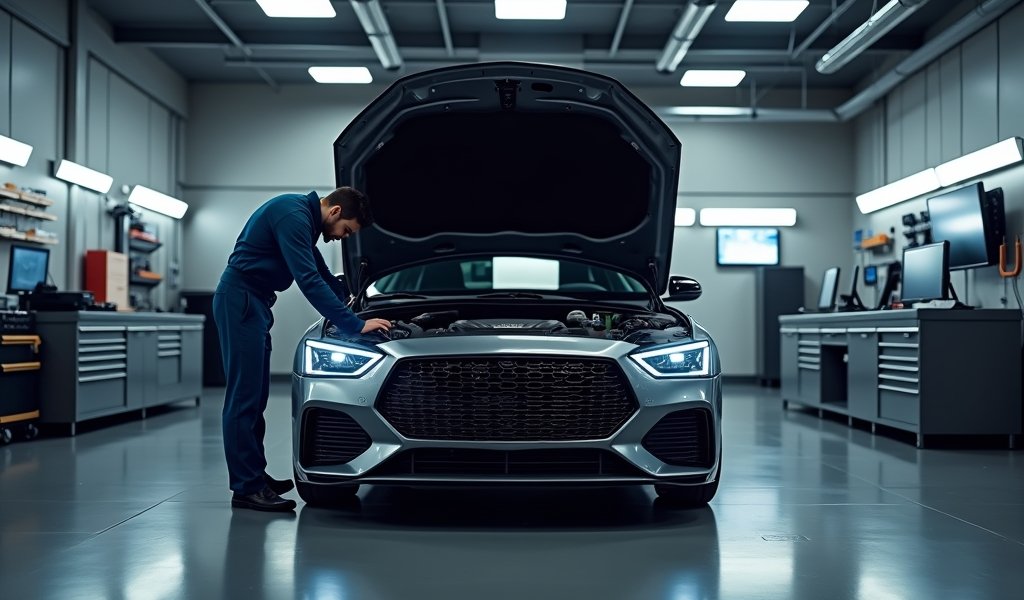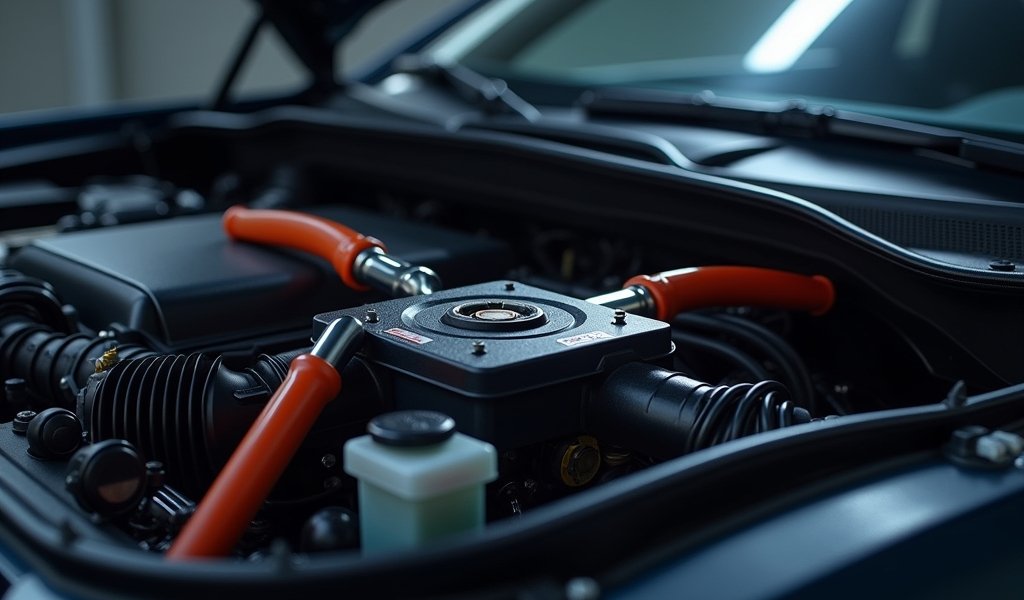Overview
This article explains how the carbon canister purge valve works as a crucial part of a vehicle’s emissions system and provides three approaches to fixing valve issues: cleaning, replacement, and diagnosing related components. It identifies symptoms of valve failure (including check engine lights, rough idling, and poor fuel economy) while offering detailed DIY repair steps that can save drivers hundreds compared to professional service costs.
Table of Contents
- Understanding the Carbon Canister Purge Valve
- Symptoms of a Failing Purge Valve
- Fix #1: Cleaning the Purge Valve
- Fix #2: Replacing the Purge Valve
- Fix #3: Diagnosing Related System Components
- Preventative Maintenance
- Conclusion
- Frequently Asked Questions
Understanding the Carbon Canister Purge Valve
Ever wonder what happens to all those fuel vapors that could otherwise escape from your gas tank? That’s where the carbon canister purge valve comes into play – a tiny but crucial component in your vehicle’s emissions control system.
Think of the purge valve as your car’s environmental guardian angel. When you park your car, fuel in the tank naturally evaporates, creating vapors that, if released into the atmosphere, would contribute to air pollution. Instead of letting these vapors escape, your car’s evaporative emission control system (EVAP) captures them in a canister filled with activated charcoal.
But what happens to these trapped vapors? That’s where our hero – the purge valve – enters the scene. When your engine is running and conditions are right, the purge valve opens like a theater curtain, allowing these stored vapors to be drawn into the engine and burned during normal combustion. It’s your car’s way of recycling – pretty neat, right?
This valve doesn’t just open and close on a whim. It’s controlled by your vehicle’s computer (ECM), which precisely times when these vapors should be introduced to maintain proper air-fuel ratios and optimal engine performance. According to EPA research, this system significantly reduces hydrocarbon emissions, which are major contributors to smog formation.
Symptoms of a Failing Purge Valve
When your carbon canister purge valve starts to throw a tantrum, your vehicle will send some not-so-subtle hints that something’s amiss. Here’s how to read these automotive smoke signals:
- Check Engine Light – Like a child raising their hand in class, your dashboard illuminates to get your attention, often with specific trouble codes like P0440, P0442, or P0446.
- Rough Idle – Your engine might stutter and shake like it had too much caffeine, especially when it’s cold.
- Poor Fuel Economy – Suddenly your car is guzzling gas like it’s going out of style.
- Failed Emissions Tests – Nothing says “fix me” quite like failing the emissions inspection.
- Starting Problems – Particularly after refueling, your car might protest when you try to start it.
- Gas Odor – If your vehicle smells like a gas station, that’s your cue something’s not right.
I once had a customer bring in their Toyota Camry complaining about an occasional stumble at idle. The check engine light wasn’t on, but when we hooked up the scanner, a pending code for the EVAP system appeared. Sure enough, the purge valve was sticking intermittently – just enough to cause that stumble without triggering the light. This sneaky behavior is why these valves can be such diagnostic puzzles.

Fix #1: Cleaning the Purge Valve
Before you rush to replace parts (and empty your wallet), consider giving that purge valve a proper bath. In my 25 years turning wrenches, I’ve seen countless valves brought back from the brink with just a good cleaning. This approach works wonders if the valve is relatively new or if problems have developed gradually.
Think of it like clearing a clogged kitchen sink – sometimes a little elbow grease is all you need rather than calling the plumber for a complete pipe replacement.
When Cleaning Makes Sense
- The valve shows no visible damage
- Your symptoms are mild or come and go
- You’ve confirmed the issue with diagnostic codes
- The valve is easily accessible (not buried deep in the engine bay)
Tools and Materials Needed
- Carburetor cleaner or throttle body cleaner
- Clean shop rags
- Safety glasses and gloves (remember, we’re working with chemicals)
- Basic hand tools for removal
Step-by-Step Cleaning Process
- Locate your purge valve. It’s typically near the intake manifold or mounted somewhere on the engine. When in doubt, your vehicle’s service manual is your best friend.
- Disconnect the negative battery terminal. Safety first – we don’t want any electrical surprises!
- Carefully detach the electrical connector. Take a quick photo with your phone before removing anything if you’re worried about forgetting the connections.
- Remove the hoses connected to the valve, noting their positions. Another photo opportunity!
- Take the valve off its mounting bracket.
- Spray carburetor cleaner into both valve openings and let it soak for 5-10 minutes. This is like giving your valve a spa treatment.
- Gently tap the valve against a clean rag to knock loose any stubborn debris.
- Continue spraying until the cleaner runs clear from the valve.
- Allow everything to dry completely – patience is key here.
- Reinstall in reverse order and reconnect the battery.
After cleaning, take your vehicle for a test drive around the block. Pay attention to how it idles and accelerates. Often, you’ll notice an immediate improvement in engine smoothness. If the check engine light was on, use an OBD-II scanner to clear the code and see if it returns.
I remember cleaning the purge valve on my neighbor’s Honda that had been sitting idle for months. The valve was gummed up from stale fuel vapors, causing a persistent rough idle. After a thorough cleaning, the car purred like a kitten again. The entire process took about 30 minutes and cost nothing but some cleaner I already had in my garage – a far cry from the $300 repair quote he’d received!
Fix #2: Replacing the Purge Valve
Sometimes, no amount of cleaning can breathe life back into a purge valve. If yours is electrically faulty or mechanically damaged beyond repair, it’s time to cut your losses and go for a replacement. Don’t worry – this is still a DIY-friendly job that won’t require an engineering degree or special tools.
Signs Replacement Is Your Best Bet
- The valve makes clicking sounds but doesn’t seem to function
- Cleaning didn’t resolve your issues
- There’s visible damage or corrosion
- Your scanner shows persistent EVAP codes despite your best efforts
Finding Your Purge Valve
Vehicle manufacturers seem to enjoy playing hide-and-seek with this component. Common locations include:
- Near the intake manifold
- On the engine, often toward the rear
- Near the throttle body
- Along the firewall
- Near or on the carbon canister (which may be located near the fuel tank)
For specific locations, Car Care Kiosk offers great video tutorials for most common vehicle models.
Replacement Guide
- Purchase the correct replacement valve for your specific vehicle make and model. Prices typically range from $30-$100.
- Disconnect the negative battery terminal – safety never goes out of style.
- Locate the valve using your vehicle’s service manual or a reliable online resource.
- Take a photo before disconnecting anything. Your future self will thank you.
- Remove electrical connections and hoses.
- Unbolt or unclip the valve from its mounting location.
- Install the new valve, ensuring proper orientation. Most valves have an arrow indicating flow direction – this matters!
- Reconnect all hoses and electrical connections.
- Reconnect the battery.
- Clear any trouble codes with a scanner.
- Test drive to ensure proper operation.
I recently replaced the purge valve on a 2012 Ford Fusion that came into my shop. The customer had been experiencing random stalling and terrible gas mileage. The part cost $45 and took me about 40 minutes to replace. When the customer returned, they couldn’t believe the difference in how the car ran. They’d been living with the problem so long they’d forgotten what “normal” felt like!
Most DIYers can complete this job in under an hour, saving $100-$200 in labor costs compared to having it done at a shop. That’s money better spent on a nice dinner or that fishing gear you’ve been eyeing!

Fix #3: Diagnosing Related System Components
Sometimes, the purge valve is just one character in a larger drama unfolding in your EVAP system. When replacing or cleaning the valve doesn’t solve your problems, it’s time to play detective and look at the supporting cast.
Think of your EVAP system as a well-orchestrated band – when one instrument is off-key (the purge valve), you notice it immediately. But sometimes, it’s actually the drummer (carbon canister) or bassist (vapor lines) causing the discord, while the purge valve is just trying its best with what it’s given.
Inspecting the Carbon Canister
This charcoal-filled canister can become saturated or damaged over time. Look for:
- Cracks or damage to the canister housing
- Excessive moisture or fuel saturation (the canister will feel unusually heavy)
- Restricted vent pathways
- Damaged mounting brackets
The canister is typically located near the fuel tank or along the vehicle’s underside. Replacement is straightforward but requires getting under the vehicle safely with proper jack stands or a lift.
Checking EVAP Hoses and Connections
In my experience, hoses are often the weakest link in the EVAP chain. Follow these steps:
- Visually inspect all accessible hoses for cracks, splits, or disconnections
- Check connections for proper seating and seal integrity
- Look for hardened, brittle, or collapsed hoses
- Pay special attention to areas near heat sources or where hoses bend
I once traced a persistent P0446 code on a Toyota Tacoma to a tiny crack in an EVAP hose that was rubbing against the frame. The crack was barely visible, but once replaced, the problem disappeared completely. The customer had already replaced the purge valve twice with no improvement!
Professional Diagnostic Methods
For particularly stubborn issues, professional diagnostic methods can be worth the investment:
- Smoke Testing: Shops use specialized machines to fill the EVAP system with visible smoke under slight pressure. The smoke escapes from leaks, making them easy to spot.
- Vacuum Testing: Using a vacuum gauge to identify pressure drops in the system can reveal leaks too small to find visually.
- Electrical Testing: Using a multimeter to check solenoid resistance and control circuits can identify electrical failures in the purge valve.
According to Motor Trend’s technical analysis, over 60% of EVAP system failures involve leaks rather than component failures, making these diagnostic methods particularly valuable.
Preventative Maintenance
An ounce of prevention is worth a pound of cure, especially when it comes to your vehicle’s EVAP system. Let me share some real-world advice that can save you headaches down the road.
Regular Inspection Schedule
- Check visible EVAP components during oil changes
- Have the system professionally inspected annually
- Pay attention to your fuel cap seal condition – a damaged seal is a common cause of EVAP codes
- Listen for the sound of the purge valve activating during engine shutdown (a soft clicking noise)
Warning Signs to Heed
Some early warning signs often go ignored but can save you from bigger problems:
- Momentary rough idling after refueling
- Occasional check engine light that clears itself
- Smell of fuel vapors, especially on hot days
- Clicking sounds from the engine compartment when shutting off the engine
How Your Driving Habits Affect the Purge Valve
Your driving style has a surprising impact on your EVAP system health:
- Frequent short trips prevent complete purge cycles – the system needs time at operating temperature to work efficiently
- Extended periods of disuse can lead to sticking valves from fuel varnish buildup
- Consistently running with a nearly empty tank increases contamination risk
- Overfilling at the pump can overwhelm the system and saturate the carbon canister
I always tell my customers to avoid topping off after the gas pump clicks. That extra squeeze might seem like you’re getting more for your money, but it can actually force liquid fuel into the EVAP system, which is designed to handle vapors only. I’ve seen canister replacements costing $300+ that could have been avoided with this simple habit change.
Conclusion
A properly functioning carbon canister purge valve isn’t just about passing emissions tests or avoiding check engine lights – it’s about maximizing your vehicle’s efficiency, performance, and longevity while doing your part for cleaner air.
By understanding the three main approaches to fixing purge valve issues – cleaning, replacement, and comprehensive system diagnosis – you can address problems efficiently and often save hundreds of dollars compared to dealer service costs.
Remember that while the purge valve itself is relatively inexpensive ($30-$150 depending on your vehicle), labor costs at shops can quickly escalate a simple repair into a $300-$400 bill. With the step-by-step guidance provided here, most vehicle owners with basic mechanical skills can tackle this job in their driveway.
Beyond the financial benefits, promptly addressing purge valve issues helps maintain optimal fuel economy, prevent more serious engine problems, reduce emissions, ensure inspection compliance, and provide smoother operation. It’s a small investment with significant returns.
Your carbon canister purge valve may be small, but its impact on your driving experience and the environment is anything but. With these fixes in your knowledge toolkit, you’re well-equipped to keep your vehicle running cleanly and efficiently for years to come.
Have you dealt with purge valve issues? Which fix worked best for you? Share your experiences in the comments below – your insights might help a fellow driver save time and money on their repair journey!
Frequently Asked Questions
How much does it cost to replace a carbon canister purge valve?
The part typically costs between $30-$150 depending on your vehicle make and model. Professional installation will add another $100-$200 in labor costs.
Can I drive with a bad purge valve?
Yes, you can drive with a bad purge valve, but it’s not recommended for extended periods. You’ll experience reduced fuel economy, possible stalling, and will be releasing unnecessary emissions.
Will a bad purge valve cause a check engine light?
Yes, a failing purge valve will almost always trigger the check engine light. Common trouble codes include P0440, P0442, P0446, and P0455.
How often should a purge valve be replaced?
There’s no set replacement interval for purge valves. Most last the lifetime of the vehicle, but issues typically start appearing between 60,000 and 100,000 miles.
Can a bad purge valve cause rough idle?
Yes, a malfunctioning purge valve can cause rough idle by allowing too much or too little vapor into the engine. This disrupts the air-fuel mixture, resulting in uneven combustion.

